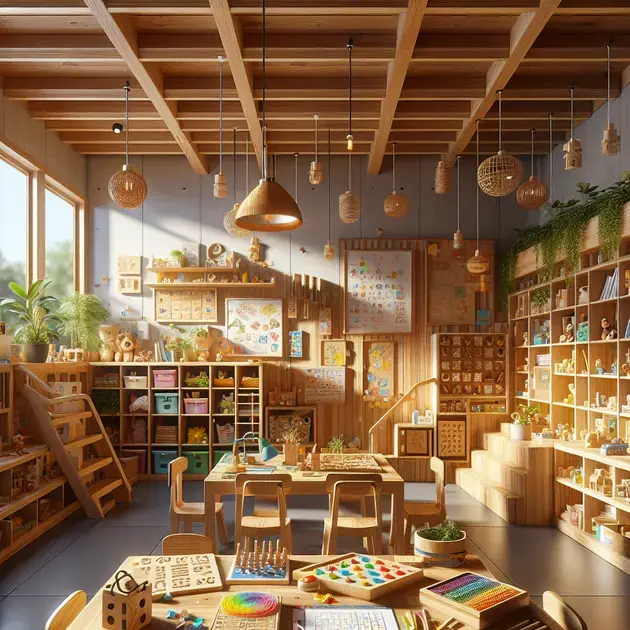Are you looking for effective ways to help your child boost their memory and cognitive skills? Look no further! In this article, we will explore some valuable memory improvement techniques for children that can make a significant difference in their ability to retain and recall information.
From fun memory games to practical study habits, these helpful tips are tailored to engage young minds and enhance their learning experience. Whether your child is preparing for exams or simply aiming to sharpen their memory, implementing these strategies can pave the way for academic success and beyond.

Fun and Engaging Memory Games
Memory games are a fantastic way to enhance your child’s cognitive abilities while having fun. One popular memory game is “Simon Says,” where children have to remember and mimic a series of actions. You can easily play this game at home or find digital versions online on websites like “ABCya” or educational apps like “Funbrain.”
Another exciting memory game is “Memory Match,” where children have to flip cards and find matching pairs. You can create your own cards with pictures or words related to your child’s interests, or play online versions available on platforms like “Poki” or the “Memory” app.
For a more interactive experience, consider playing “Scavenger Hunt,” a game where children search for hidden objects based on clues or riddles. You can organize a scavenger hunt in your backyard or use apps like “GooseChase” to create digital scavenger hunts with customizable challenges.
Additionally, puzzle games like jigsaw puzzles or Sudoku can also improve memory retention and problem-solving skills. Websites such as “Jigsaw Explorer” offer a wide range of online jigsaw puzzles, while Sudoku apps like “Sudoku.com” provide endless challenges to keep your child’s mind sharp.
By incorporating these fun and engaging memory games into your child’s routine, you can make learning a more enjoyable and memorable experience, leading to enhanced cognitive development and improved memory skills.
Interactive and Educational Study Techniques
Interactive study techniques can significantly boost your child’s memory retention and learning outcomes. One effective technique is creating flashcards using platforms like “Quizlet” or “StudyBlue,” where your child can quiz themselves on various subjects and review information in an engaging way.
Another interactive method is watching educational videos on platforms such as “Khan Academy” or “Ted-Ed,” which use visual and auditory cues to help children better understand and remember complex concepts. Encourage your child to take notes while watching these videos to reinforce their memory.
Utilizing educational apps like “Duolingo” for language learning or “IXL” for math and science practice can provide interactive exercises that adapt to your child’s level and progress. These apps offer a personalized learning experience that keeps children engaged and motivated to improve their skills.
Furthermore, incorporating hands-on activities like science experiments or art projects can stimulate different areas of the brain and enhance memory encoding. Websites such as “Science Buddies” offer a wide range of science project ideas, while platforms like “Artful Parent” provide creative art activities for children of all ages.
By combining interactive study techniques with traditional methods, you can create a dynamic learning environment that caters to your child’s individual learning style and enhances their memory retention and academic performance.
Creative Mnemonic Devices for Easy Recall
Mnemonic devices are memory aids that help children remember information more easily through associations or visual cues. One creative mnemonic device is “ROY G. BIV” for remembering the colors of the rainbow in order: red, orange, yellow, green, blue, indigo, violet. Encourage your child to create their own mnemonic phrases for other lists or sequences they need to memorize.
Another popular mnemonic technique is using acronyms, such as “HOMES” to remember the Great Lakes’ names: Huron, Ontario, Michigan, Erie, Superior. Children can create their own acronyms for spelling words or historical events to make memorization more fun and effective.
Visual imagery can also be a powerful mnemonic tool. Encourage your child to draw pictures or symbols representing key concepts or facts they need to remember. Websites like “Canva” or apps like “MindMeister” can help children create visual mind maps to connect ideas and improve memory recall.
Additionally, chunking is a mnemonic strategy where information is grouped into smaller chunks to make it easier to remember. Teach your child to break down long numbers or lists into manageable chunks, improving their ability to recall the information accurately.
By incorporating creative mnemonic devices into your child’s learning process, you can make memorization more engaging and effective, helping them retain and recall information with greater ease and confidence.
Conclusion
Memory games, interactive study techniques, and creative mnemonic devices offer engaging ways to enhance your child’s cognitive abilities and memory skills. By incorporating fun memory games like “Simon Says” and “Memory Match,” you can make learning enjoyable while improving memory retention and problem-solving skills. Additionally, puzzle games such as jigsaw puzzles and Sudoku provide mental challenges that sharpen your child’s mind and memory capabilities.
Interactive study methods like flashcards, educational videos, and learning apps like “Duolingo” and “IXL” cater to different learning styles, boosting memory retention and academic performance. Hands-on activities like science experiments and art projects stimulate various brain areas, aiding in memory encoding and information recall. Combining these interactive techniques with traditional methods creates a dynamic learning environment that fosters improved memory and overall learning outcomes.
Utilizing mnemonic devices such as acronyms, visual imagery, and chunking techniques further aids in memory recall and retention. Encouraging children to create their own mnemonic tools enhances their engagement and effectiveness in memorizing information. By incorporating these creative mnemonic devices into your child’s learning routine, you can make the memorization process more interactive, enjoyable, and ultimately, more successful in boosting memory recall and confidence.





